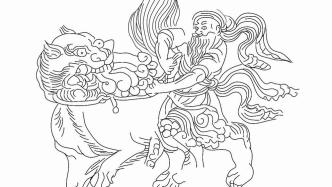
The murals in the Eastern Han Dynasty tomb in Horinger, Inner Mongolia, are located in the west of Xindianzi Village, Horinger County, Hohhot City. They are precious paintings depicting the integration of various ethnic groups during the Eastern Han Dynasty. This 1800-year-old tomb is not open to visitors, but its murals are on display in replicas in Shanghai. On September 3, the academic seminar on "'Holographic Reproduction of Rejuvenating Paintings' - Holographic Reproduction of Holinger's Eastern Han Dynasty Tomb Murals" and the Non-Ontological Reproduction Exhibition of Ancient Chinese Murals was held at the Art Museum of Shanghai Academy of Fine Arts, Shanghai University. The exhibition site was restored After viewing the tomb chamber and corridor, viewers can experience the 1:1 scale murals of Helinger's Eastern Han Dynasty tomb chamber.
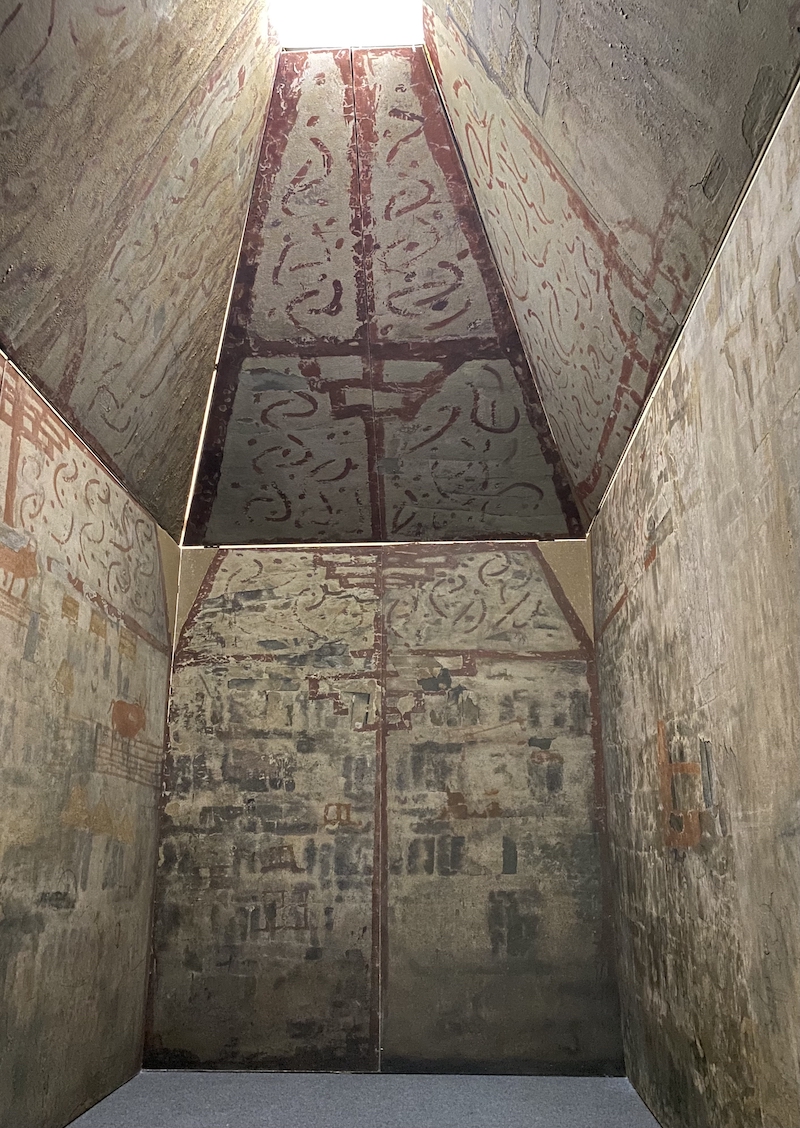
At the exhibition site, the murals in Helinger's Eastern Han Dynasty tomb were restored using the "holographic reproduction system"
What is the concept of "holographic copying"?
According to Siqintana, founder of the Traditional Mural Research and Creation Base of the Inner Mongolia Siqintana Art Museum of the China Academy of Art, one of the organizers, the "ancient mural holographic copying system" is a non-ontological protection solution born out of the current copying methods. The plan is a ductile and preventive protection measure for ancient murals. It is also a scientific system for the protection of ancient murals with independent intellectual property rights and multiple patents of the Sqintana Art Museum. The materials developed on the basis of this system are moisture-proof, acid-proof, resistant to shedding, and more durable. The visual texture and special texture effect of restored ancient murals are consistent with the original ancient murals, and can accurately "translate" all the features of ancient murals. Information, reaching the technical level of cultural relics "below the first level of authenticity".
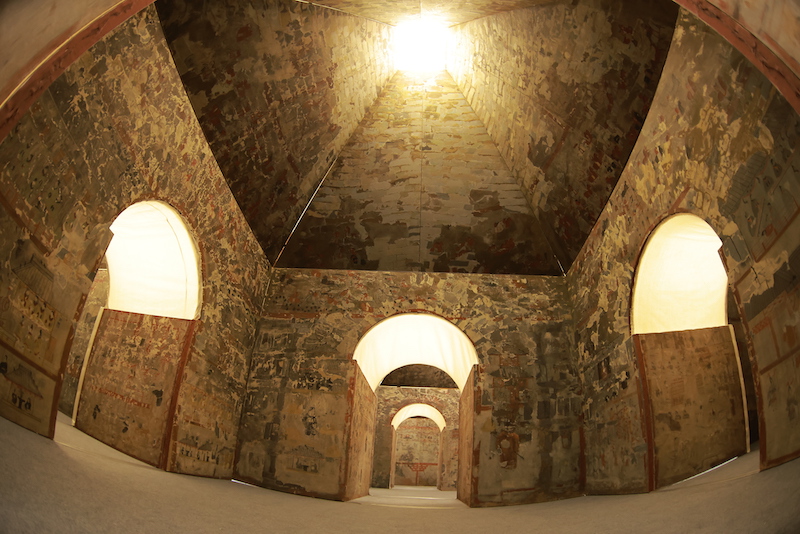
Exhibition site, restored interior of Helinger’s Eastern Han Dynasty tomb
Siqin Tana began to collect and study murals in 2002. In recent years, Inner Mongolia Siqin Tana Art Museum has established the "Chinese Ancient Mural Materials Technology Research Center" to explore the "Ancient Mural Holographic Copy System". Starting from the new concept of research and protection of traditional murals, this imitation system focuses on more complete information in a specific tense, emphasizing finding its original typical state in the tracking, combing and research of the historical decay process. While freezing the history with full information in the original typical state, it also realizes the ancient cultural carrier with multi-dimensional inheritance functions such as historical culture, aesthetic appeal, and traditional skills.
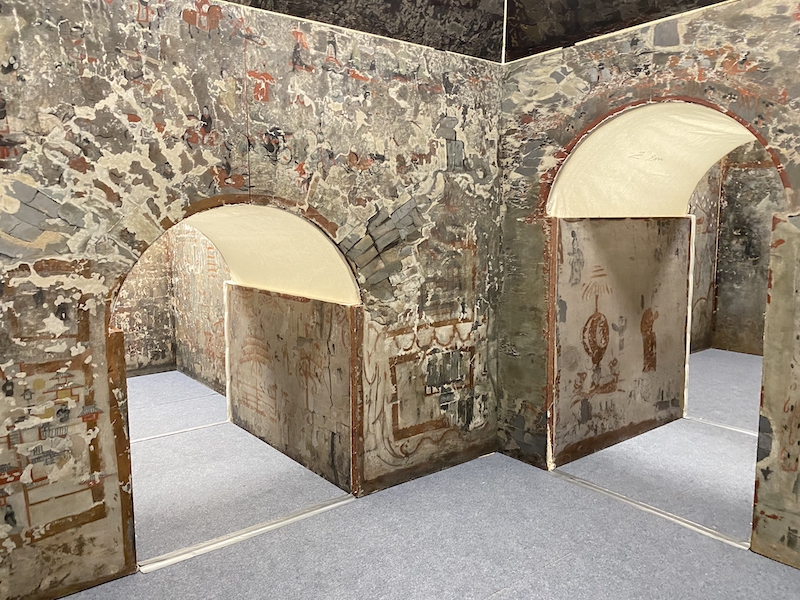
exhibition site
Miao Tong, an associate professor at the Shanghai Academy of Fine Arts and one of the curators of the exhibition, said that the exhibition is to reshape and reproduce the murals in the Eastern Han Dynasty tomb of Helinger, and the exhibition and related restoration and protection research are interdisciplinary in nature. At present, high-definition digital technology has reached a considerable level, and it is conceivable that such technology will continue to advance. "Although it is a good way to use modern high-definition technology to preserve ancient mural images, using traditional materials such as natural mineral colors and traditional painting techniques to copy murals, its material texture and the human warmth contained in the hand-painted painting are digital. Technology is irreplaceable. This is why this exhibition is so important."

Exhibition site, the restored murals of Helinger's tomb in the Eastern Han Dynasty
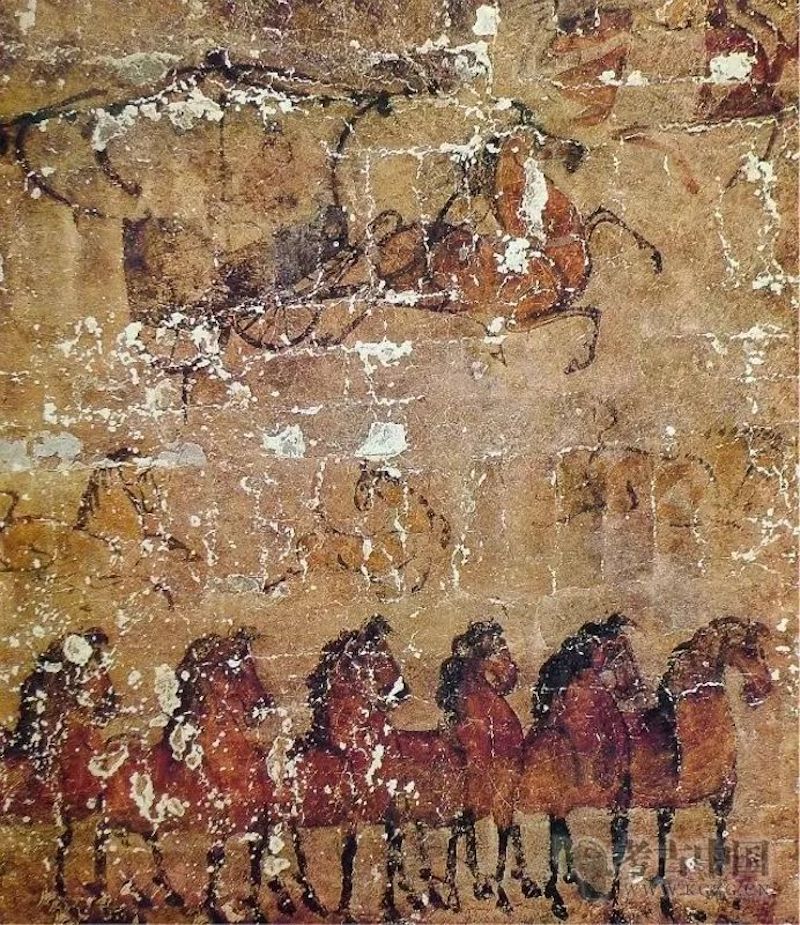
Inner Mongolia Helinger Eastern Han Dynasty mural painting of horses. Network Diagram
As we all know, whether it is tombs, temples or grotto murals, most of them cannot display and communicate the original works on a larger scale. Even if it can be exhibited in different places under the protection of various measures, it cannot fully display more information that ancient murals should have. The important information contained in the materials, crafts and techniques of traditional murals due to different times and different regions cannot be completely replaced by high-definition digital image printing and inkjet painting. At this time, "holographic copying" is one of the means to reproduce and display ancient murals. Previously, the Dunhuang Academy copied the original large-scale copy of the entire cave, which is also a way for the audience to experience the murals and culture of the cave at close range.

exhibition site

Structural diagram of the Eastern Han Dynasty mural tomb in Helinger, Inner Mongolia. Network Diagram
The Helinger Mural Tomb is a large brick mural tomb in the late Eastern Han Dynasty, which was excavated by the Inner Mongolia Autonomous Region Museum and other units from 1972 to 1973. It is not as well-known as Shanxi. From 1979 to 2013, four Northern Dynasties tombs were unearthed successively (in 1979, the murals of Lou Rui's tomb were unearthed, in 2000, the murals of Xu Xianxiu's tomb were unearthed, in 2008, the murals of Shuiquanliang tomb were unearthed, and in 2013, the murals of Jiuyuangang tomb were unearthed) , but let people see the more childish, simple and rough style of the tombs of the Han, Wei and Jin Dynasties.
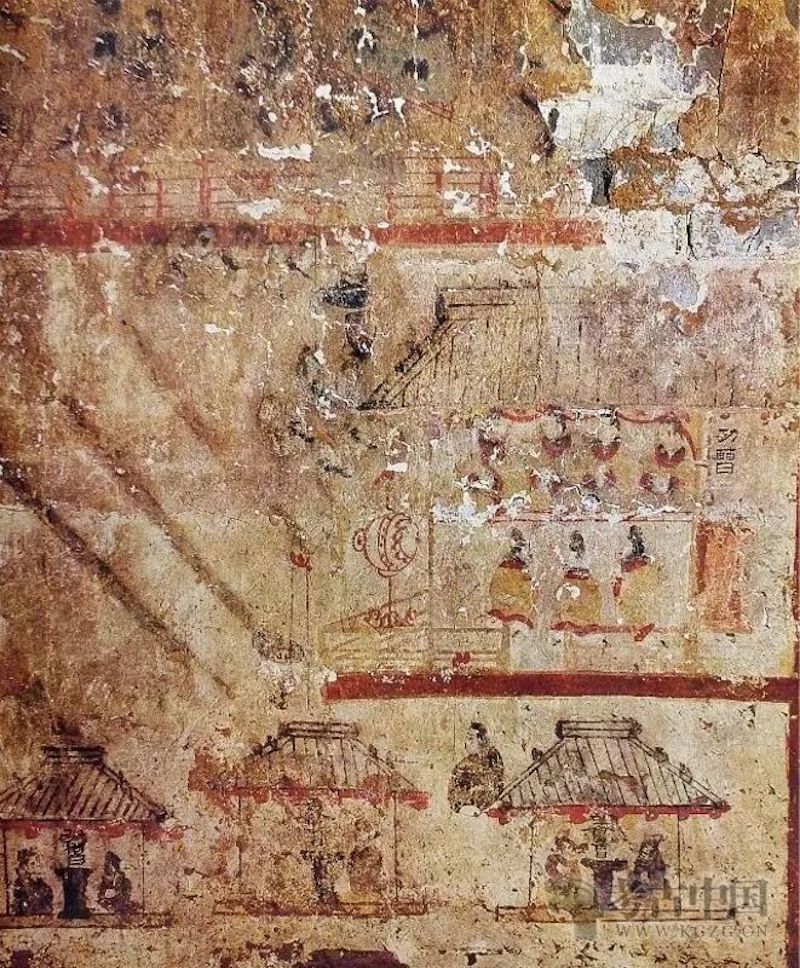
The east door of the Eastern Han Dynasty mural tomb in Helinger, Inner Mongolia. Network Diagram
Helinger, known as "Chengle" in ancient times, belongs to the famous Dingxiang County in the Western Han Dynasty. At the end of the Eastern Han Dynasty, Tuoba Li, the ancestor of the Tuoba Tribe of the Xianbei nationality, led 200,000 people to the south of Yinshan Mountain, took control of Chengle City, and renamed it "Shengle". 140 years later, the Tuoba tribe moved their capital from Shengle to Shanxi, becoming the first minority in the history of the Chinese nation to rule the Central Plains and establish an orthodox dynasty. Shengle, as the northern capital of the Northern Wei Dynasty, lasted for nearly 150 years.
The Helingerhan mural tomb is divided into front, middle and rear main chambers, two ear chambers and one side chamber, with a total length of about 20 meters. There are more than 46 groups of murals on the tomb wall, tomb roof and sides of the corridor, with more than 250 titles. This is the Han Dynasty mural with the most inscriptions seen in archaeological excavations in my country so far. These murals reflect the social style of the multi-ethnic areas in northern my country during the Eastern Han Dynasty. According to the content of the murals and the inscription on the list, the owner of the tomb was once promoted as Xiaolian, and then through Lang, he became the chief historian of Xihe, the capital of Xingshang County, the commander of Fanyang, and finally the envoy to protect Wuhuan Xiaowei (Eastern Han Dynasty The highest official assigned to the northern ethnic areas).
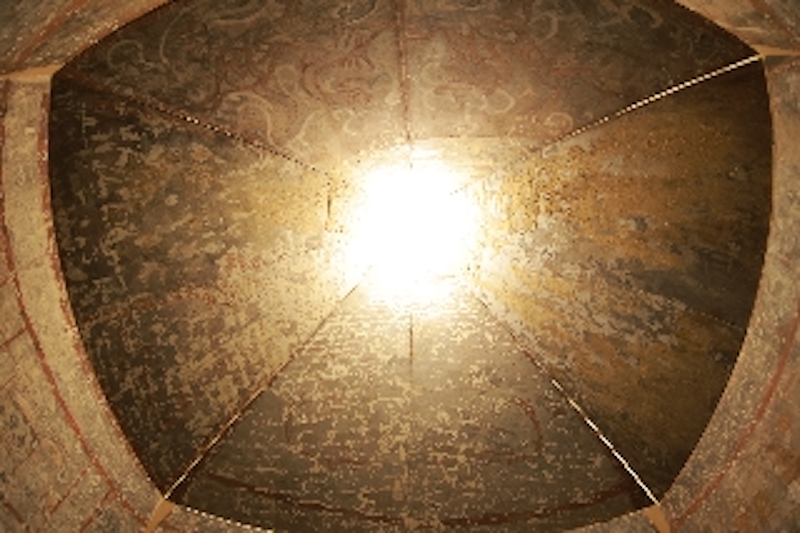
Exhibition site, restored tomb
The murals in the tomb are all over the walls, roof and both sides of the corridor of the tomb. On the four walls of the front room, the east and south walls of the middle room, and the north wall of the corridor, in the order of the tomb owner's official experience, the upper part draws the travel map of various positions from Xiaolian to the envoy, envoy, guard Wuhuan, and school lieutenant, and the lower part Painted the map of the Lishi City Mansion, the Tujun City Mansion, and the Fanyang Palace Temple where he lived when he was the chief historian of Xihe to the captain of Huwuhuan. Among them, the map of Ningcheng painted on the north wall of the corridor from the front room to the middle room and the east wall of the middle room depicts the huge scene when the owner of the tomb received the leader of Wuhuan in the shogunate of the guard Wuhuan Xiaowei.

Inner Mongolia Horingel's mural feast of the Eastern Han Dynasty. Network Diagram
The murals also include banquets, dances and music, a hundred operas reflecting the life of the ruling class, scenes reflecting social production activities in the Eastern Han Dynasty (such as farming, manor, horse herding, cattle herding, etc.), and portrayals of social life at that time, such as The costumes, hairstyles, and appearances of ethnic minorities, as well as auspicious pictures and story pictures of some sages, loyal ministers, filial sons, and martyr girls, etc. Among them, the picture of "immortal riding a white elephant" on the top of the tomb's front room is considered by some scholars to be one of the earliest Buddhist images in China.

Inner Mongolia Helinger Eastern Han Mural Phoenix Bird Suzaku Man Riding White Elephant. Network Diagram
In the exhibition, the classic "Dance and Music and Hundred Operas" from Helinger's mural tomb and "Han Envoys and Guards Wuhuan's Travel Map" were displayed correspondingly. "A Hundred Plays of Dance and Music" can be regarded as one of the best murals of the Eastern Han Dynasty. It depicts the tomb owner and guests watching music and dance juggling while drinking. In the center of the picture is a Jiangu, with one person on each side holding a batter, and on the left is an accompaniment band, and there are thrilling performances such as making pills, flying swords, dancing wheels, and children's skills. Its composition method of arranging figures with Jiangu as the center shows the concept of early Chinese painting. The main colors of the picture are red, black and brown, revealing a naive and simple temperament, showing the author's immature artistic thinking and skilled painting skills.

Mural of hundreds of operas in the Eastern Han Dynasty Tomb of Helinger. Network Diagram

Exhibition site, replica version of Baixi murals
The most prominent thing in "Travel Map of Envoys and Guards of Wuhuan School Captain" is the travel map surrounded by the murals in the front room of the tomb. middle. The more than one hundred horses in the painting are dynamic and lifelike, each with its own style. "Juyongguan Picture" depicts the scene of the owner of the tomb going to the grassland through Juyongguan. The bridge in the valley is used to represent Juyongguan. In addition, the lines are concise, accurate and imaginative, making this grand and expressive painting.

He Lingel's long history of Eastern Han Dynasty murals. Network Diagram
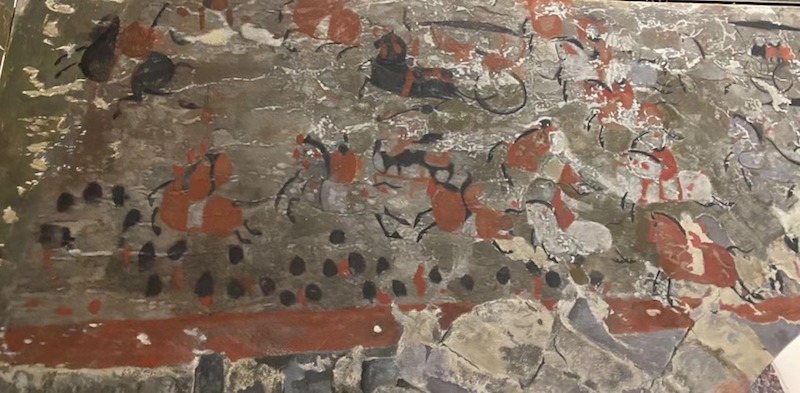
Exhibition scene, replica version
In the exhibition hall, there are also photos of the unearthed murals of the Eastern Han tomb of Helinger, the creation process and teaching site documents of the students in the 2018 National Art Fund training project, which provide the audience with a better understanding of the past and protection status of the murals of the Eastern Han tomb of Helinger. Rich information.

Exhibition site, restored corridor entrance
After the opening ceremony of the exhibition, an academic seminar on "Integral Copy of Helinger Eastern Han Dynasty Murals and Non-ontological Reproduction of Ancient Chinese Murals" was held in the exhibition hall. The seminar brought together domestic mural experts, artists and scholars from Xinjiang Kizil Grottoes Research Institute, Inner Mongolia Museum, Dunhuang Research Institute, Central Academy of Fine Arts, etc. An example of the overall copying of murals in Helinger's Eastern Han Dynasty tomb, discussing the non-noumenal innovative protection concept and the application of material technology and methods for ancient murals. The symposium carried out in-depth discussions and exchanges on new methods and materials for the protection of ancient murals, as well as traditional culture and art education. Zeng Chenggang, Dean of the Shanghai Academy of Fine Arts, expressed the hope that through this exhibition and academic discussion, the organic combination of art, technology and archaeology will be established to build a practical platform to promote the development of interdisciplinary linkages, which will also have important academic value and promotion significance for discipline construction.
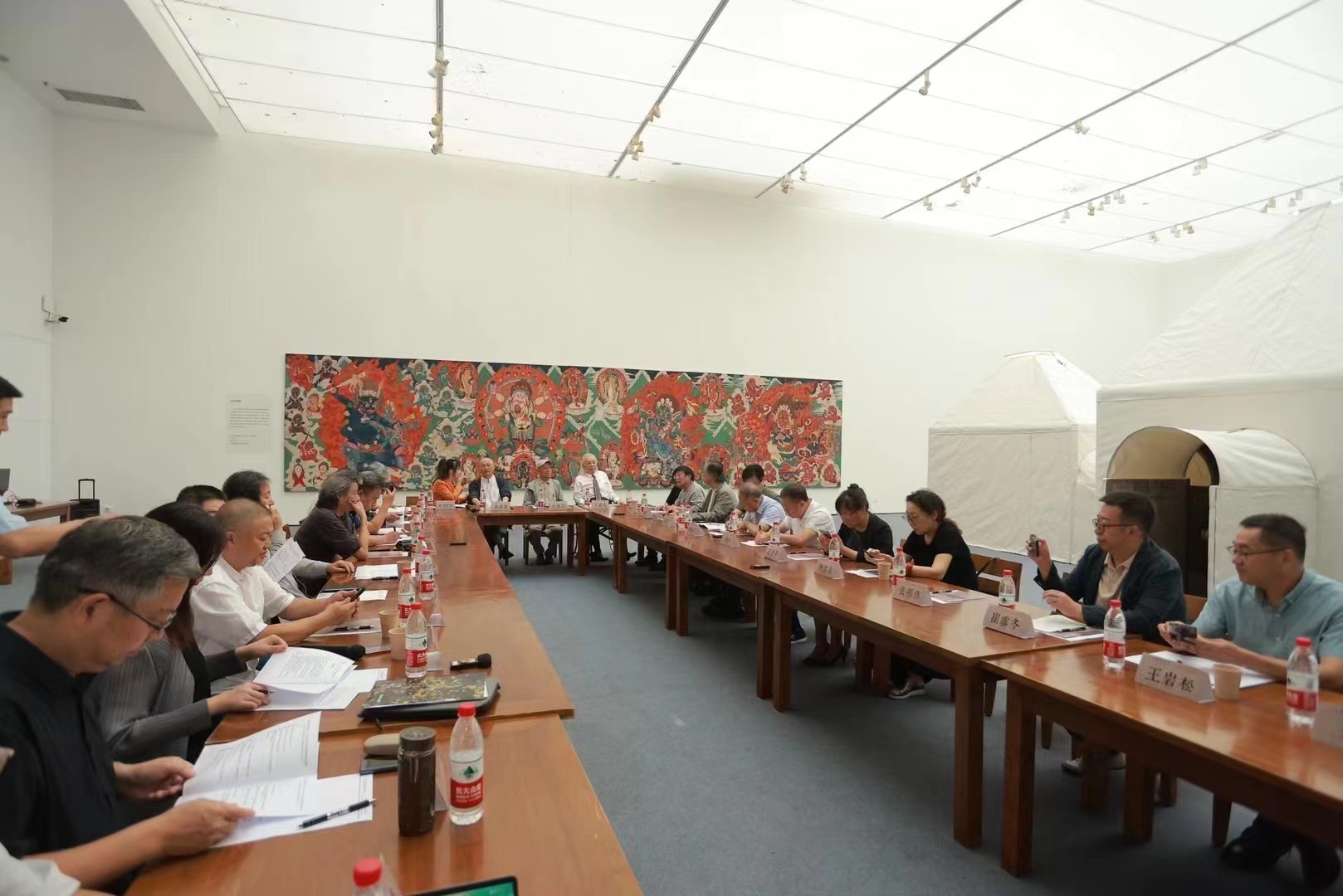
Academic seminar
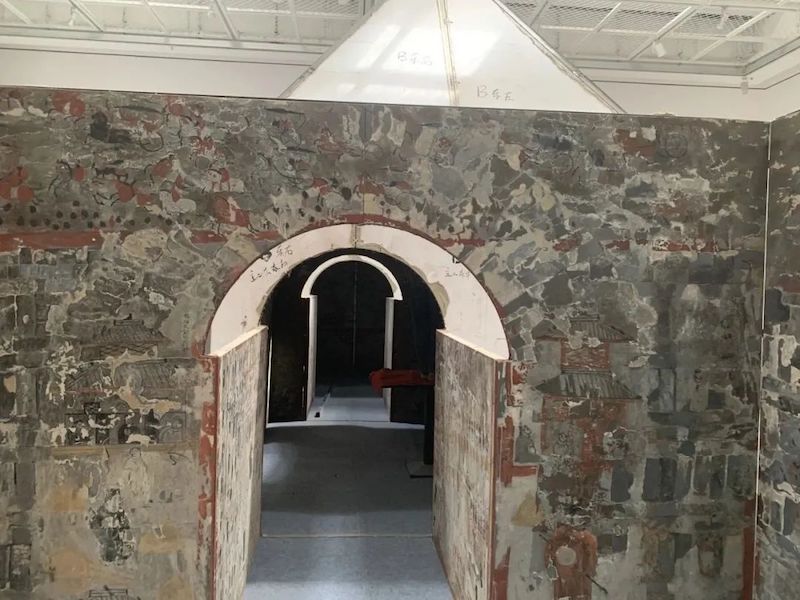
exhibition site
Note: The exhibition is co-sponsored by the Shanghai Academy of Fine Arts of Shanghai University, the traditional mural research and creation base of the Inner Mongolia Siqentana Art Museum of the Chinese Academy of Arts, and the Mural Art Committee of the Inner Mongolia Artists Association, and will be on display until September 12.


